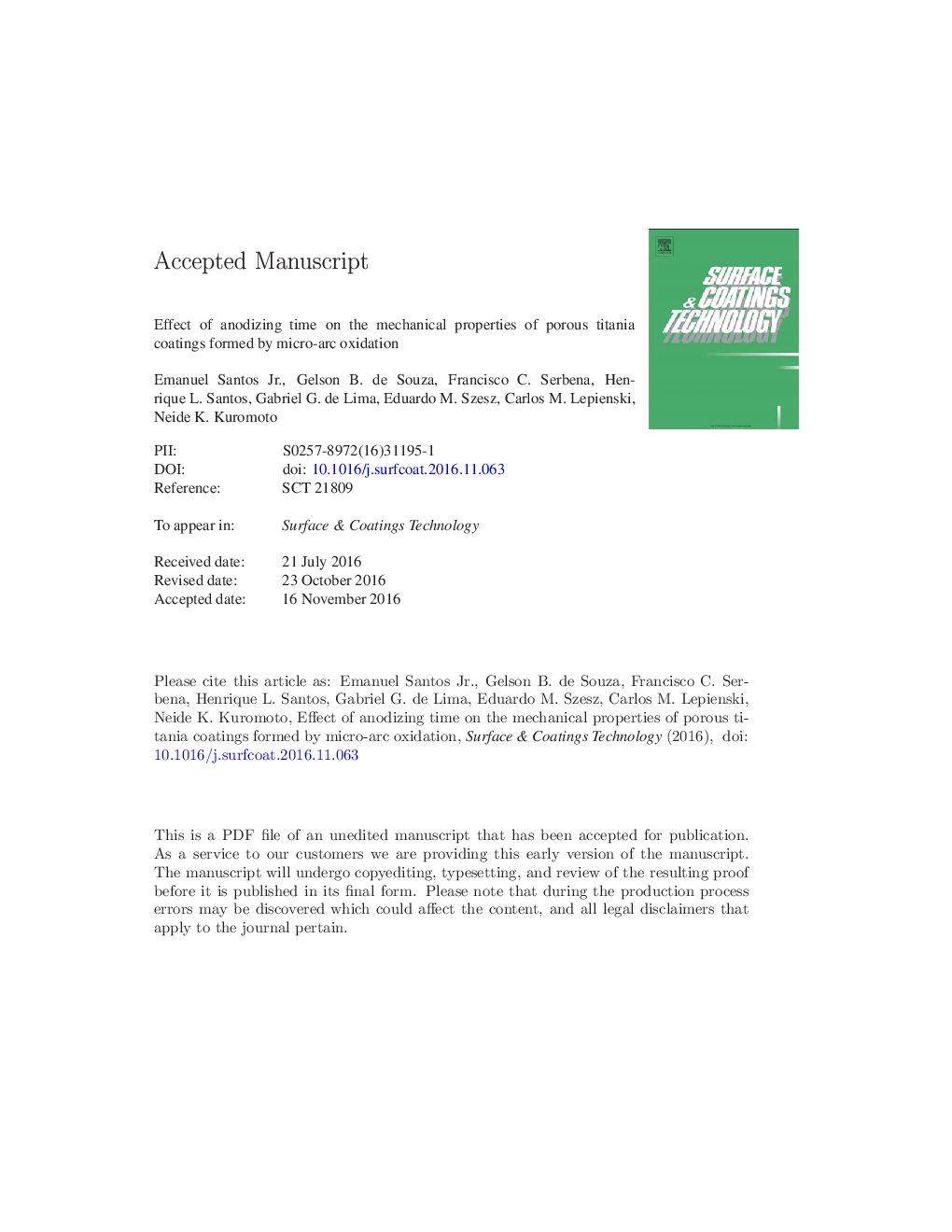| Article ID | Journal | Published Year | Pages | File Type |
|---|---|---|---|---|
| 5465253 | Surface and Coatings Technology | 2017 | 38 Pages |
Abstract
Porous TiO2 coatings were produced on commercially pure Ti substrates by micro-arc oxidation (MAO) in 1.0 M H2SO4 electrolyte for different anodizing times. Their mechanical properties were assessed by means of instrumented indentation, XRD residual stress measurements and scratch resistance tests. The rutile/anatase ratio increased from ~ 0 up to 84% in the 10-360 s anodizing time range, with further increase of coating thickness, porosity and roughness. Titania coatings produced for 180 and 360 s had poor adhesion and uneven surfaces with spontaneous detachment from the substrate. Coating hardness ranged from 3.5 up to 4.0 GPa (close to Ti), whereas the effective elastic modulus varied from 110 up to 120 GPa (19% lower than Ti), regardless of the substrate effects. Coatings exhibited tensile residual stresses, while the substrate compressive stress increased forming a plateau at about â 110 MPa for anodizing time longer than 60 s. The presence of such hardened layer beneath the interface improved the coating integrity in the scratch tests under the severe tribological condition, thereby increasing about tenfold the detachment critical load for the samples prepared in the 10-60 s MAO time range. Therefore, the 60 s anodizing time can be a useful reference line for producing mechanically resistant porous titania coatings.
Related Topics
Physical Sciences and Engineering
Materials Science
Nanotechnology
Authors
Emanuel Jr., Gelson B. de Souza, Francisco C. Serbena, Henrique L. Santos, Gabriel G. de Lima, Eduardo M. Szesz, Carlos M. Lepienski, Neide K. Kuromoto,
